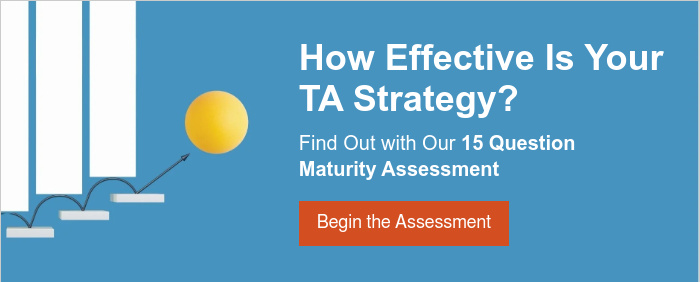Most advanced Talent Acquisition (TA) teams have invested in employer branding, robust candidate experiences, and efficient full-time hiring pipelines. But cracks appear when business needs outpace those systems. Roles that don’t fit cleanly into permanent headcount can take weeks to staff. Procurement operates on separate systems. Data is scattered. And hiring decisions are often made in isolation from broader workforce planning. This fragmentation reduces your organisation’s ability to respond quickly to change—whether that’s a surge in project-based work, an acquisition, or a shift in customer demand.
This is where Total Talent Management comes in.
Total Talent Management unifies all talent streams—including full-time employees, contingent workers, contractors, gig talent, and freelance professionals—under a single approach. By breaking down organisational silos and integrating HR, Procurement, and business functions, a Total Talent strategy provides greater workforce agility, visibility, and control.
With Total Talent Management, your organisation can adapt faster to change, whether that’s ramping up for a product launch, navigating market shifts, or scaling project-based work. It’s about aligning all talent sources through a cohesive framework that supports both short-term execution and long-term growth.
Moving Beyond Silos
Even high-performing TA functions can be limited by structural boundaries. HR owns full-time recruitment. Procurement manages contingent labour. Business leaders go directly to niche vendors for specialised needs. Everyone has their own systems, priorities, and success metrics.
These divides create unnecessary complexity:
- Workforce plans are often built in silos, leading to gaps or overlaps.
- Budget ownership is unclear, reducing accountability.
- Talent insights are inconsistent, making it harder to predict needs or measure ROI.
To evolve, organisations must create shared governance across talent functions to ensure decisions are made collaboratively, not in parallel.
What Total Talent Management Looks Like in Practice
You may already be performing at an advanced level. But in a world where 36% of CEOs cite workforce issues as a top business priority, talent initiatives must be elevated beyond function-specific excellence. Total Talent Management connects your existing strengths—like automation, analytics, and EVP—with adjacent functions. For example:
- Shared forecasting and workforce planning: HR, Procurement, and business units work from the same demand models to build integrated talent plans.
- Unified technology stack: A VMS and ATS that speak to each other. Talent analytics that span all worker types. One view of workforce supply and demand.
- Consistent experience across all talent channels: Whether someone is a contractor or a candidate, their interaction with your brand is cohesive, fast, and respectful.
- Skills-based decision-making: You prioritise outcomes and required skills—not job titles or employment types—when designing roles.
In other words, it’s not about replacing what’s working. It’s about connecting what’s working to everything else.
How Flexible Is Your Current Talent Strategy?
The success of Total Talent Management hinges on knowing where you stand today. Some key questions to consider:
- Do your hiring managers think of contingent labour and full-time talent as part of the same blended workforce?
- Are Procurement and TA working from the same workforce strategy?
- Can your systems report on total workforce cost, performance, and pipeline in one place?
- Do you have mechanisms in place to scale hiring across different labour types when the business needs shift?
A Phased Path to Workforce Integration
Even for advanced TA teams, a Total Talent programme doesn’t need to be all-or-nothing from day one. Leading companies often begin by piloting integration within a specific region or business unit, gradually expanding as governance, workflows, and reporting are refined. A few high-impact entry points include:
- Revisiting role design: Rather than assigning a work type (e.g., FTE vs contractor) up front, start with the outcome you need to achieve. What’s the best way to get it done?
- Creating shared KPIs: Align HR, TA, and Procurement on common goals such as workforce agility, speed-to-fill, or cost per outcome.
- Building cross-functional teams: Establish regular collaboration between TA, Finance, and business leaders to coordinate workforce planning.
- Investing in integration: Whether it’s technology, reporting, or process, ensure your systems support a total workforce view—not just pieces of it.
The Role of Technology and Data in Total Talent Solutions
Technology is a critical enabler, but it needs to be used with intent. Rather than layering on more tools, forward-thinking teams are prioritising:
- Integrated platforms that centralise data across workforce types
- Predictive analytics that inform real-time workforce decisions
- AI-driven sourcing tools that evaluate candidate fit across multiple engagement models
By treating technology not just as infrastructure but as a source of insight, TA leaders can ensure their teams remain a driving force behind business agility.
Where Are You on the Total Talent Management Journey?
Even for sophisticated TA teams, there’s always room to optimise. Whether you’re integrating systems, partnering with procurement, or evolving your workforce planning process, Total Talent Management is a journey, not a one-time project. Use our Talent Acquisition Maturity Assessment to evaluate your workforce flexibility and integration across all talent types.





